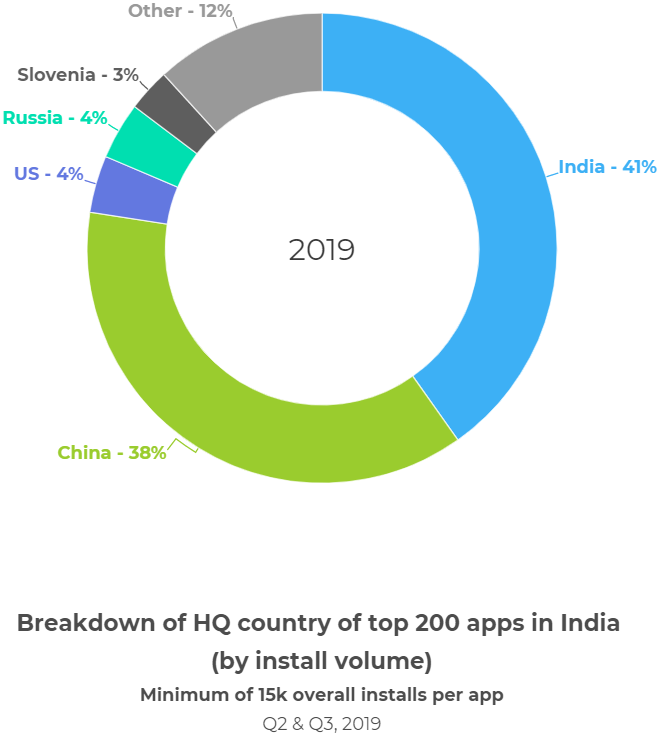
Chinese Apps Lose Ground in India as Local Developers Get Stronger
- Domestic app development in India is picking up pace, and success is showing on reports.
- In 2019, Indians preferred locally-created offerings versus Chinese-made software.
- Not many Chinese developers can be trusted with our data, as they have a history of failure on that part.
About a year ago, we reported that Chinese developers were soaring in India, having 44 out of the top 100 apps in that huge market. The Chinese had somewhat invaded India with games, payment apps, chat apps, file-sharing tools, travel companions, food review aggregators, and anything else you can imagine really. However, Indian developers and local software firms didn’t just stay dormant. Instead, they fought back, invested in training and education, employed talent, and threw all they got in the market. The response from the people was vindicating, as locally-developed apps are winning ground against Chinese offerings.
This year’s numbers come from an AppsFlyer report, which analyzed 6.5 billion installations of 3300 apps during Q2 and Q3 2019. The report gives an overall market share of 41% to India which tops the installations number list for the first time. China comes second with 38%, which is down by 5% compared to last year’s 43%. The Chinese apps that continue to do well are these that concern shopping, food & drink, and travel. The categories that lost ground over to domestic developers are those that concern finance, news, and gaming. Russia and the United States tie in third place with 4% each, Slovenia is fourth with 3%, and all others account for 12%.
Source: AppsFlyer
As for which regions in India had the highest number of non-organic installations, Maharashtra comes first with 12.54%, Uttar Pradesh is right behind with 12.29%, Gujarat accounts for 7.09%, Karnataka is fourth with 6.42%, and Tamil Nadu came fifth with 6.27%. As for the device brands that are used in the country, Xiaomi is on the top with 23.6%, Samsung is second with 22.9%, Vivo is third with 13.8%, and OPPO amassed 11.6%. While iPhones only account for about 2.1%, the report indicates that iOS users are more willing to purchase things in-app or pay for the apps themselves. The difference shown in the following diagram is staggering really.
Source: AppsFlyer
The Indian market is a huge one, and that is why the Chinese were eyeing on it and entered with dynamism before. Considering the untrustworthy privacy policies that usually characterize Chinese apps, it is good to see that domestic developers are getting back on track and manage to capture a local audience and the financial support that comes with it. Understandably, this is taking place gradually, so we hope that the trend continues throughout 2020 too.
Do you trust Chinese-made apps, or do you prefer to use domestically developed alternatives? Let us know where you stand in the comments down below, or on our socials, on Facebook and Twitter.









